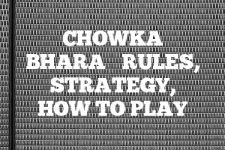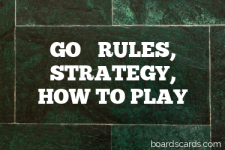Chaturanga: Mastering the Ancient Game of Strategy. Rules, Instructions & How to Win.
Introduction
Chaturanga is an ancient Indian strategy game that is considered the common ancestor of the modern chess. I find it has a fascinating history, full of historical interpretation and a variety of possible ways work out the finer rules. It is a two-player oppositional game that requires strategic thinking and planning. The game is played on an 8×8 uncheckered board, similar to a chessboard, and each player starts with 16 pieces: a king, a general, two elephants, two horses, two chariots, and eight foot soldiers.

Dating back to approximately the 6th century AD, Chaturanga is steeped in history and cultural significance. It was designed as a representation of the four divisions (or ‘angas’) of the Indian army: infantry, chariots, elephants, and cavalry.
The game is designed for two players, each of whom must employ strategic thinking and careful planning to outmaneuver and defeat their opponent. The objective of the game, like chess, is to checkmate the opponent’s king. This involves trapping the king so it cannot escape without being captured.
The game is played on an 8×8 uncheckered board, a characteristic it shares with its modern counterpart, chess. This grid-based board allows for a multitude of different moves and strategies, adding to the complexity and depth of the game.
Each player begins the game with 16 pieces, each with its own unique abilities and restrictions. These pieces include a king, a general (which is analogous to the queen in chess), two elephants (which move like the bishops in chess), two horses (similar to knights in chess), two chariots (which are equivalent to rooks in chess), and eight foot soldiers (which are essentially the pawns in chess).
The king, like in chess, is the most important piece and its capture or entrapment results in the end of the game. The general, elephants, horses, and chariots each have their own unique movement patterns and capturing abilities. The foot soldiers, while less powerful, serve as crucial defensive and offensive units that can protect higher-value pieces and threaten the opponent’s pieces.
Chaturanga’s historical significance and strategic depth make it a fascinating study for both historians and strategy game enthusiasts alike. Its influence on modern chess is undeniable, and understanding its rules and gameplay can provide unique insights into the evolution of strategic board games. More modern variations I’ve found include games like Shogi (Japanese Chess).
Rules for playing Chaturanga
The rules of Chaturanga are quite similar to those of chess, with a few key differences. Here are the basic rules:
- The game begins with the pieces arranged in a specific order on the board. The king is placed next to the general, with the elephants, horses, and chariots on either side and the foot soldiers in front.
- Players take turns moving their pieces, with the objective of capturing the opponent’s king.
- Each type of piece moves in a specific way. The king moves one square in any direction, the general diagonally, the elephants in an L-shape (like the knight in chess), the horses straight forward, and the chariots horizontally or vertically.
- The foot soldiers move forward one square, but capture diagonally.
- When a player’s king is threatened with capture on the next move, it is said to be in ‘check’. If a king is in a position to be captured (in ‘checkmate’), the game ends.
There are also some ‘house rules’ that can be used to vary the game, such as allowing the foot soldiers to move and capture in the same way as the king.
How does each piece move in Chaturanga
Chaturanga is an ancient Indian strategy board game that is considered the common ancestor of chess. It is played on an 8×8 board, called an Ashtapada. Here’s how each piece moves:
King (Raja)
The king moves exactly like the king in modern chess – one square in any direction: horizontally, vertically, or diagonally.
General (Mantri)
The general moves one square diagonally in any direction. It’s similar to the king, but without the ability to move horizontally or vertically.
Elephant (Gaja)
The elephant moves exactly two squares in any direction: horizontally or vertically. Unlike the modern chess bishop, the elephant cannot jump over other pieces.
Horse (Ashva)
The horse moves like the knight in chess. It makes a move that consists of one step straight (horizontally or vertically) and one step diagonally. The horse can jump over other pieces.
Chariot (Ratha)
The chariot moves like the rook in chess. It can move any number of squares along a row or column. It cannot jump over other pieces.
Foot-soldier (Padati)
The foot-soldier moves and captures exactly like the pawn in chess. It moves one square forward (towards the opponent’s side) but captures one square diagonally forward. However, unlike the pawn in chess, the foot-soldier does not have the ability to move two squares on its first move and there is no en passant.
There are varying interpretations of what happens when a pawn (Padati) in Chaturanga reaches the opposite end of the board and how it can be promoted as in modern chess.
While there isn’t a definitive answer, the consensus among most historians is that players didn’t have the freedom to promote a pawn in Chaturanga to any piece as in modern chess. Some historians propose that a pawn always promoted to a minister (the equivalent of a queen in modern chess), whereas others argue that a pawn would transform into the initial opposition piece that occupied the square on the opposite side of the board at the game start.
Remember, all pieces in Chaturanga capture in the same way they move, and there is no castling move as in modern chess.
How to Win at Chaturanga
Winning at Chaturanga requires a combination of strategic planning, tactical thinking, and a good understanding of the strengths and weaknesses of each piece. Here are some strategies to help you win:
- Control the center: The center of the board is a key battleground in Chaturanga. Controlling the center gives your pieces more mobility and can restrict your opponent’s movements.
- Develop your pieces: Move your pieces out from their starting positions to control more of the board. Try to develop your pieces so that they work together and support each other.
- Protect your king: Your king is your most important piece. Keep it safe from attacks and avoid putting it in a vulnerable position.
- Attack your opponent’s king: The ultimate goal is to checkmate your opponent’s king. Look for opportunities to attack the king, while keeping your own king safe.
Best Strategies for playing Chaturanga game
The best strategies for playing Chaturanga involve a combination of offensive and defensive play. Here are some strategic plays to aim for:
- Use your elephants and chariots effectively: These pieces are your most powerful and versatile, so use them to control the board and threaten your opponent’s king.
- Coordinate your pieces: Try to coordinate your pieces so that they work together. For example, you can use your foot soldiers to support your more powerful pieces.
- Plan ahead: Try to anticipate your opponent’s moves and plan your strategy several moves in advance.
- Be patient: Chaturanga is a game of patience and strategy. Don’t rush to attack; instead, build up your position and wait for the right moment to strike.
Here are some broader strategies to help you play a good game of Chaturanga:
Understanding the Rules: The first strategy is to understand the rules and guidelines of Chaturanga. The game is believed to be a common ancestor of chess and is played on an 8×8 board, like chess, but with a different setup and different rules. Familiarize yourself with these to be able to devise an effective strategy.
Planning Your Moves: As with all strategic games, planning your moves ahead of time is crucial in Chaturanga. Try to anticipate your opponent’s moves and devise a counter-strategy.
Protect Your King: The objective of the game is to checkmate the opponent’s king. Therefore, it’s essential to always protect your king and ensure it’s not vulnerable to attack.
Control the Center: Controlling the center of the board gives you more room to move your pieces and restricts your opponent’s movements.
Use Your Pieces Wisely: Each piece in Chaturanga – King, General, Elephant, Horse, and Boat – has unique movements and powers. Use them wisely.
Utilize Your Pawns: Pawns, or foot-soldiers, can turn into other pieces if they reach the other side of the board. Use this to your advantage.
Be Patient: Chaturanga is a game of patience. Don’t rush into moves without considering possible consequences.
Use the ‘Pin’ and ‘Fork’ Tactics: ‘Pin’ is a situation where an opponent’s piece is threatened and can’t move without exposing a more valuable piece. A ‘Fork’ is a single piece making two or more direct attacks simultaneously.
Practice: The more you play, the better you get. Practice regularly to understand the game better and develop strategies.
Learn from Mistakes: If you lose a game, don’t get disheartened. Instead, try to understand where you went wrong and learn from your mistakes.
Study the Game: Read books, watch videos and study the game to learn different strategies and techniques.
Adapt: Be ready to change your strategy mid-game based on your opponent’s moves. Sticking to one strategy might not always work.
Remember, Chaturanga is a game of strategy, so a well-thought-out plan and foresight can give you an edge over your opponent.
Scenarios for Chaturanga
There are many different scenarios that can arise in a game of Chaturanga, and understanding these can help you to turn the game to your advantage. Here are some common scenarios and how to handle them:
- You are in check: If your king is in check, you must move it out of check on your next turn. Look for the safest square to move your king to, and consider whether you can counter-attack on your next move.
- Your opponent’s king is in check: If you have put your opponent’s king in check, try to maintain the pressure and force your opponent into a defensive position. Look for ways to increase the threat to the king and aim for a checkmate.
- You have a material advantage: If you have more pieces than your opponent, use this to your advantage. Use your extra pieces to control the board and restrict your opponent’s movements.
- You are in a tight position: If your pieces are cramped and have limited mobility, look for ways to free up your position. This might involve sacrificing a piece to gain more space, or it might involve a strategic retreat.
Frequently Asked Questions about playing Chaturanga game
Q: How does the general move?
A: The general moves one square diagonally in any direction.
Q: Can the foot soldiers move backwards?
A: No, the foot soldiers can only move forward.
Q: What happens if I cannot make a legal move?
A: If you cannot make a legal move, the game is a draw.
Q: Can I move my king into check?
A: No, you cannot move your king into a position where it could be captured on the next move.
Q: How do I win the game?
A: You win the game by checkmating your opponent’s king. This means the king is in a position to be captured (in ‘check’) and there is no legal move that can remove the threat of capture on the next move.
External Links
All about the traditional board game, Chaturanga
History of Chess and Chaturanga [Video]

A digital native around since the early days of online gaming communities around 2001. An early contributor to the cult gaming site ClanTemplates, Adam has spent years giving free gaming resources to the community. With BoardCards, Adam is most experienced and commonly writing the articles on Strategy multi-player games like Settlers of Catan and Avalon. His first introduction to board games was via Mancala, an Egyptian-origin stone game and one of the oldest known games still played worldwide. Contact me via email



